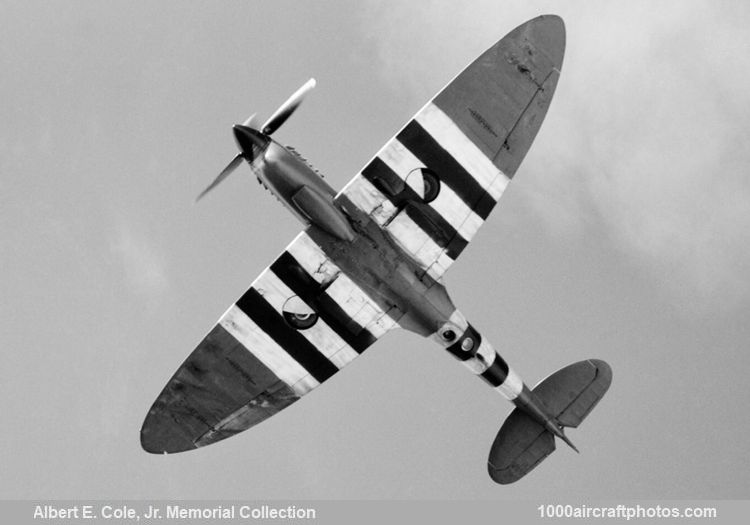06/07/2021. Remarks by Johan Visschedijk: "One of the Spitfire's most important duties, mostly non-combatant, was obtaining air intelligence of enemy positions by photographic reconnaissance. This activity had been initiated by Sidney Cotton in his Lockheed 12 in 1938 as an undercover civilian enterprise.
The first PR sortie was made from a French base in November 1939 by a converted Spitfire Mk.I and from then on specific variants were developed under PR mark numbers. The first were the PR.Mk.IV and PR.Mk.VII, both converted from the basic Mk.V. In the PR.Mk.IV the wing torsion box forward of the main spar was sealed to form integral fuel and oil tanks to promote increased range; the clean leading edge and curved windscreen (replacing the armored glass) enabled the speed to be raised to 382 mph (615 kmh). Speed was the essential factor so as to get the pictures and return to base without heroic combat. Conversely, the PR.Mk.VII had a normal wing with 0.303 in (7.7 mm) guns, with an extra fuel tank only in the rear fuselage. Its shorter range was compensated by its ability to fight its way home. Various arrangements of the F8, F24 and F52 cameras were fitted, with refinements such as lens dust-flaps and heating for high-altitude operations.
The superior high-level performance of the Spitfire Mk.IX with its two-speed two-stage Merlin 61 series engine led to the PR.XI version with an advantage of 5 mph (8 kmh) more than the standard Mk.IX. To suit varying requirements a 'universal' camera-mounting system was devised. The PR.Mk.X which oddly followed the PR.Mk.XI differed in having a pressure cabin and the sixteen produced were converted from Mk.VII airframes. The PR.Mk.XIII was a development of the armed PR.Mk.IV but with the Merlin 32 low-level engine. There were 26 examples converted from various Mark airframes by Heston Aircraft.
The appearance of the more powerful Griffon 61 series engines led to the PR.Mk.XIX which comprised a Mk.XIV fuselage, tail and engine, modified PR.Mk.XI wings and the PR.Mk.X pressure cabin. By borrowing some camera space in the wings for more fuel tankage the capacity was 303 gal (1,146 l), and drop tanks of 108 or 204 gal (409 or 773 l) could also be fitted if extreme range was required. A measure of Spitfire development may be gauged by comparison with the fuel capacity of the Mk.I of 102 gal (386 l)!
The pictured aircraft belonged to RAF No. 541 Squadron, operating from RAF Benson, near Wallingford, Oxfordshire, UK. It is wearing the D-Day (June 6, 1944) markings and the aircraft made numerous flights over the western front until the end of the war. The aircraft was struck off charge in April 1946."
